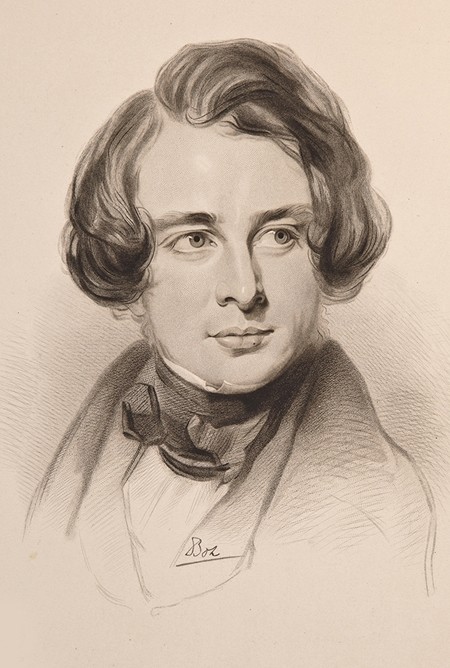
On 7 February 1812, at Mile End Terrace in Portsmouth, Charles John Huffam Dickens was born. He was to become one of the world’s best-known English authors and regarded as the greatest novelist of the Victorian era. He created some of the world’s best-known fictional characters and during his lifetime, his novels enjoyed unprecedented popularity. Even today, his books are still widely read.
Charles Dickens was not only a novelist, newspaper editor and social critic; he was also a connoisseur of fine wine. Ironically, although he wrote timeless classics such as Great Expectations, Oliver Twist, A Christmas Carol, and A Tale of Two Cities, his last piece of writing a few days before he died in 1870 was a bit more mundane. It was a wine list. It took the form of a single, rather untidy hand-written sheet summarizing all the drinks that he had in the cellar at his splendid mansion called Gad’s Hill Place in Kent. The quantity of beer, wine and spirits was enormous but included some of the finest wines and liqueurs of the day. Recently this single piece of paper was sold at Sotheby’s for over fourteen thousand dollars. You could buy a lot of Mont Clair for that.
Among the drinks listed were a fifty gallon cask of ale, an eighteen gallon cask of gin, a nine gallon cask of brandy and a nine gallon cask of rum. The cellar also included dozens of bottles of champagne and table wines. Dickens bought almost all of his wine from the wine merchants Joseph Ellis & Son of Hill Street in Richmond, originally founded in 1831. He must have been regarded as a good customer because his wine list includes four dozen bottles of Champagne, five dozen of Chablis, five dozen of Sauternes, six dozen of Claret and countless other delights. But you get the idea. He wasn’t short of a bottle or two.
Interestingly, Dickens listed many of wines by their place of origin such as “Volnay” or “Sauternes” rather than by the name of their producer. This indicates that they were almost certainly shipped to England in bulk and bottled by the wine merchant – a common practice at the time. Dickens had good taste in Clarets – the generic name still used in Britain for red wines from the Bordeaux region of France. He had a few dozen bottles of top quality claret that even in those days must have been expensive.
Yet, despite this wealth of booze in the cellar, he was a moderate drinker for the time. One of my favourite Dickens books is Pictures from Italy where the author took his family for an extended stay in 1844. He had already achieved international fame as a novelist, and his relentless energy drove him to explore many different parts of Italy. It would have also presented him with the opportunity to try to local vino. Wine is produced in every region of Italy, so Dickens would have had plenty to choose from, though by modern standards, much of the wine would have been fairly rustic. It would also have been cheap. In his book The Wine Atlas of Italy, Burton Anderson explains that in those days, a daily supply of village wine cost Italians less than their daily supply of bread.
In Italy today, over eight hundred different grape varieties are grown. If this strikes you as rather a lot, it’s actually only the tip of the iceberg. It’s generally accepted that there are about 24,000 different varieties of wine grape in the world. Many of the less important varieties have remained in their places or origin and never left. For example, the Ruzica Crvena, the Crljenak Kastelanski and the Svrdlovina Crna have remained in Croatia, but perhaps this is because nobody but the Croatians can pronounce the names.
On the other hand, some grapes have boldly gone where no grapes have gone before. Take Chardonnay for example. Its spiritual home is in Burgundy but it thrives almost anywhere wine is produced and Bordeaux’s Cabernet Sauvignon shows up in nearly every major wine-producing country in the world.
Only about 150 different grape varieties are produced in commercial quantities and we can boil down this number even further to the nine or ten so-called “classic” grapes, also known as “international grapes”. These are the big names you should know. Sometimes they’re made into ordinary wines, but in the right hands, the right places and given the right time, they can produce some of the finest wines in the world.
A few years ago, a survey was carried out in the UK in which customers in wine shops were asked to name as many grape varieties as they could. The amazing result revealed that few people could name more than one or two grape varieties and some people couldn’t think of any at all. And remember, these were not people picked off the street – they were customers in wine shops. To my mind this level of ignorance is staggering.
But I wonder how many of the “classic” grape varieties you can bring to mind. Well, there’s Chardonnay and Cabernet Sauvignon to give you a start. Can you name any of the others? I bet Charles Dickens could.
 |
 |
 |





